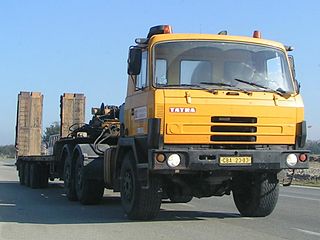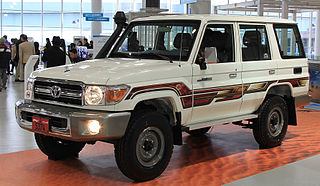History
Towards the end of 1933, Dr. Everhard Bungartz, director of the newly established company Bungartz & Co., contacted Josef Ganz because he wanted to develop and build a small car according to his patents.
Technically the new Bungartz Butz model was very similar to the Standard Superior, introduced one year earlier. It featured a tubular chassis, a mid-mounted engine, and independent wheel suspension with swing-axles at the rear.
The Bungartz Butz was available in two basic versions: the Butz Cabrio-Limousine and the Butz Touren-Wagen. Both versions were two-seaters. The Butz had a plywood body covered in artificial leather and fitted with metal wings. The available colour schemes were either silvery gray, dark blue, sea green or beige, with black wings, wheel rims and chassis. Also available for the Butz was a special small trailer with backbone chassis and swing axles.

The Standard Superior was an automobile, produced from 1933 to 1935 by Standard Fahrzeugfabrik of Ludwigsburg, Germany, founded by motorcycle maker Wilhelm Gutbrod and unrelated to the Standard Motor Company of England. These small cars were designed according to the patents by Josef Ganz and featured rear-mounted two-stroke engines.

Josef Ganz was a Jewish-German car designer born in Budapest, Austro-Hungarian Empire.

The Tatra 815 is a truck family, produced by Czech company Tatra. It uses the traditional tatra concept of rigid backbone tube and swinging half-axles giving independent suspension. The vehicles are available in 4x4, 6x6, 8x8, 10x8, 10x10, 12x8 and 12x12 variants. There are both air-cooled and liquid-cooled engines available with power ranging from 230–440 kilowatts (310–590 hp). As a successor to Tatra 813 it was originally designed for extreme off-road conditions, while nowadays there are also variants designated for mixed use. The gross weight is up to 35,500 kg (78,264 lb).

The Triumph Spitfire is a British front-engined, rear-wheel drive, two-passenger convertible sports car introduced at the London Motor Show in 1962 and manufactured between 1962-1980. Styled for Standard-Triumph in 1957 by Italian designer Giovanni Michelotti, the Spitfire was manufactured for the duration of its production at the Standard-Triumph Canley works — and evolved over a series of five production iterations, with a approximately 315,000 manufactured over 18 years.

The Chapman strut is a design of independent rear suspension used for light cars, particularly sports and racing cars. It takes its name from, and is best known for its use by, Colin Chapman of Lotus.
A swing axle is a simple type of independent suspension designed and patented by Edmund Rumpler in 1903. This was a revolutionary invention in automotive suspension, allowing driven (powered) wheels to follow uneven road surfaces independently, thus enabling the vehicle's wheels to maintain better road contact and holding; plus each wheel's reduced unsprung weight means their movements have less impact on the vehicle as a whole. The first automotive application was the Rumpler Tropfenwagen, later followed by the Mercedes 130H/150H/170H, the Standard Superior, the Volkswagen Beetle and its derivatives, the Chevrolet Corvair, and the roll-over prone M151 jeep amongst others.

The Dodge Power Wagon is a four-wheel drive medium duty truck that was produced in various model series from 1945 to 1980 by Dodge. The Power Wagon name was revived for the 2005 model year as a four-wheel drive version of the Dodge Ram 2500. As a nameplate, "Power Wagon" continues as a special package of the four-wheel drive version of 3/4 ton Ram Trucks 2500 model.

The Ford Super Duty is a series of heavy-duty pickup trucks produced by the Ford Motor Company since the 1999 model year. Slotted above the consumer-oriented Ford F-150, the Super Duty trucks are an expansion of the Ford F-Series range, from the F-250 to the F-550. Rather than adapting lighter-duty trucks for heavier use, Super Duty trucks have been designed as a dedicated variant of the Ford F-Series, including pickup trucks and chassis cab vehicles; the Ford F-450 is the largest pickup truck offered for sale in North America.

Albion Motors was a Scottish automobile and commercial vehicle manufacturer.

The 70 Series is a family of Toyota Land Cruiser models produced since 1984. It replaced the 25-year-old 40 Series as the off-road model of the Land Cruiser lineup, while the contemporary 60 Series developed into more comfortable luxury SUVs starting with the 80 Series. Despite major changes in styling and numerous technological updates, the 70 Series was designed to retain the off-road capabilities and durability associated with the 40 Series. The 70 Series is marketed throughout the world, except for countries like India, the United States, Mexico, Brazil and Korea where they were imported and put into commercial or private use. As a celebration of the Land Cruiser 70's 30th anniversary, Toyota temporarily marketed the Land Cruiser 70 series in the Japanese market for 12 months.

The Citroën Type C was a light car made by the French Citroën car company between 1922 and 1926 with almost 81,000 units being made. Known as Citroën 5HP or 5CV in France and 7.5HP in Britain, it was the second model of automobile designed and marketed by André Citroën, between 1922 and 1926. It followed the 10HP "Type A " (1919), then 10HP "B2" (1921); they were the first European mass-produced cars.
Sylva Autokits is a kit car manufacturer based in Lincolnshire, England. Sylva was founded in 1981 by Jeremy Phillips and has developed and produced a number of small and lightweight sports cars. Sylva cars have won a number of 750 Motor Club Kit Car championships.
The SA was Toyota's first new passenger car design after World War II. It was the first in a family of vehicles before the introduction of the Crown. A series of light trucks also shared the chassis and major components of these passenger cars.

The Scania 4-series low floor city bus and coach range was introduced by Scania in 1997 as a successor to the 3-series bus range.

Ardie was a company in Nürnberg, Germany that manufactured motorcycles from 1919 until 1958. The company's name derives from that of its founder, Arno Dietrich.

The Iveco Massif is a utility 4×4 vehicle mainly aimed at the utility services and military markets and was part of Iveco’s 4×4 and off-road range which also includes the Trakker lorry and Daily 4×4 van. Massif was produced by Santana Motors from 2007 to 2011 and its rebadged and restyled version of the Santana PS-10. In 2010, due to poor sales and Fiat Group's ability to serve the European 4×4 market with imported Jeeps, such as the Jeep Wrangler vehicles, that were made to replace the Santana in the market, Iveco decided to stop the agreement with Santana. In 2011 the owner of Santana, the Government of Andalusia, decided to close down the company and its car factory and 1,341 people were laid off or retired prematurely. From 6,692 cars made in 2007, the company manufactured 1,197 in 2009 and no more than 769 in 2010.

Maikäfer was the nickname of an automobile prototype, built in 1931 by German engineer Josef Ganz at Adler.

Ardie-Ganz was the name of an automobile prototype, built in 1930 by German engineer Josef Ganz at the German motorcycle manufacturer Ardie.
The Dana/Spicer Model 70 is an automotive axle manufactured by Dana Holding Corporation and has been used in OEM heavy duty applications by Chevrolet, Dodge, and Ford. It can be identified by its straight axle tubes, 10 bolt asymmetrical cover, and a "70" cast in to the housing and is visually similar to the Dana 60. The majority of the Dana 70s are rear axles, however Dana 70 front axles do exist. Both front and rear axle variations were first offered in 1957. The Dana 70 is generally regarded to have more strength than a Dana 60 but not as much as a Dana 80. Gross axle weight ratings are often lowered by the vehicle manufacturer for safety and tire reasons.

The "New Generation“ is a series of trucks by Daimler-Benz built from 1973 to 1988. It was then replaced by the Mercedes-Benz SK series. With the "New Generation", Daimler-Benz expanded its market position in the medium and heavy truck segments. Its cab was also used by Mercedes-Benz of North America, who confusingly offered it with inline-six or -five engines as the LP series beginning in 1985.

















